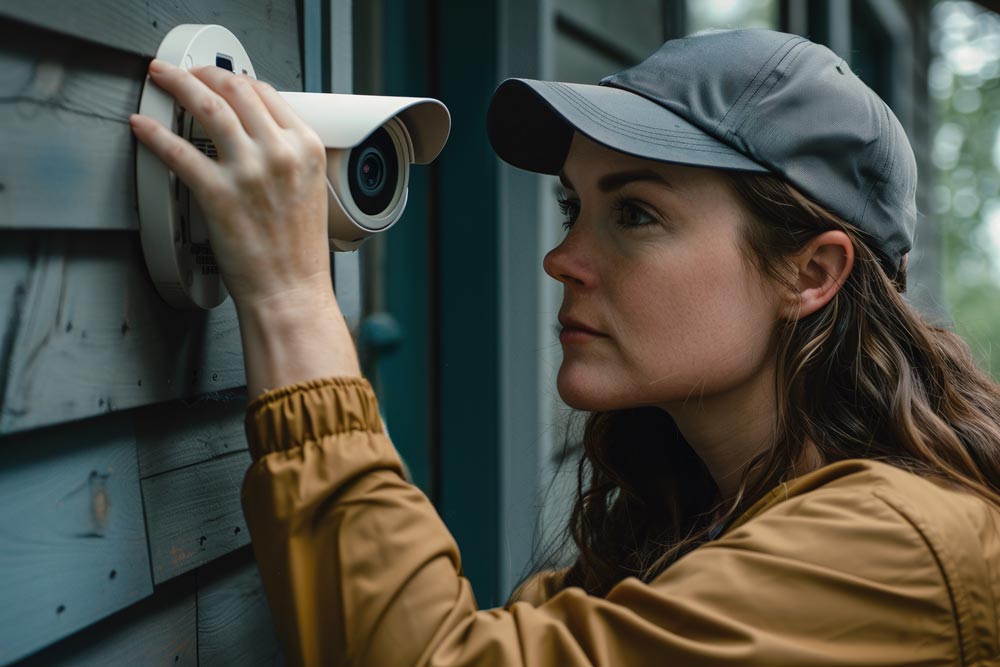Blogs

Security Cameras (CCTV) Smart Setup: What to Look for, What to Avoid
- Super User
Over the years, I’ve installed more security cameras than I can count. If there’s one thing I’ve learned, it’s this: the smartest setup doesn’t just happen by sticking a camera wherever there’s an open wall. A reliable system requires planning, the right equipment, and a little common sense. Skip any of those, and the system might look good at first but fall short when it’s needed most.
Getting Coverage Right
One of the biggest mistakes people make is assuming a single camera can cover an entire property. It can’t. Proper coverage comes from overlap, making sure there are no blind spots that can hide activity. Think of it like mowing a lawn: skip a strip here and there, and the result is patchy.
Camera placement should focus on key entry points, walkways, and areas of high activity. Angles matter, too. Too high, and details are missed. Too low, and the coverage is narrow. Finding the right balance takes a little more effort, but it pays off.
Considering the Light
Lighting conditions can be tricky in South Louisiana. Bright sun, sudden thunderstorms, and long humid nights all affect performance. Some cameras handle low-light settings better than others, while others may need supplemental lighting to function properly.
It’s important to remember that light changes throughout the year. A setup that works fine in winter may create problems in summer when the sun takes a different path. Planning for those changes keeps the system consistent instead of seasonal.
Built to Last in Local Conditions
Down here, the weather is not shy. High humidity, storms, and salt in the air closer to the coast can do a number on equipment. That’s why durability matters just as much as coverage. Outdoor cameras need protective housings, sealed connections, and weather-rated cabling. Without those, corrosion and water intrusion set in quickly.
I’ve seen setups where someone used indoor-grade equipment outside. It works for a while—until the first storm rolls through and the system goes dark. Saving a little money upfront usually costs more down the line.
Wired, Wireless, or Both?
There’s always a debate between wired and wireless systems. The truth is, both have their place. Wired systems tend to be more stable, while wireless offers flexibility. Many properties do best with a combination of the two.
On large properties, wires cut down on interference and keep the connection strong. In tighter spaces or places where it’s tough to run cable, wireless is practical. The key is matching the method to the situation instead of forcing a one-size-fits-all solution.
Power and Connectivity
Another common oversight is power. Cameras without steady power are just expensive decorations. Backup systems can keep things running during outages, which is worth considering in a region known for strong storms.
Connectivity matters just as much. Systems that rely on internet service need enough bandwidth to handle the load. Without it, recordings lag, freeze, or miss important moments. It’s like trying to fit a Mardi Gras parade down a one-lane street—things get jammed up.
Storage: Don’t Skimp on It
A camera system without proper storage is like a refrigerator without shelves. There’s no point in recording if the footage disappears after a day or two. Storage should be sized to meet the needs of the property, whether that means a few days of recording or several weeks.
Some setups use local storage, others use cloud options, and many combine both. Local storage keeps things running even if the internet cuts out, while cloud storage offers redundancy. Each has trade-offs, and the right balance depends on the situation.
Integration with Other Systems
Modern security setups rarely stand alone. Cameras can tie into alarms, access control, or even building automation. When systems talk to each other, they work together to create a more complete level of protection.
Integration also makes it easier to manage everything in one place. Instead of juggling separate systems, the property benefits from a coordinated approach.
Regular Maintenance Matters
Even the best system needs upkeep. Dust, pollen, and the occasional spiderweb can reduce performance over time. A regular cleaning schedule, along with inspection of connections and housings, keeps things working as they should.
Neglecting maintenance often leads to systems failing at the worst possible moment. It’s a bit like skipping oil changes on a car—things seem fine until they suddenly aren’t.
Smart Practices in the Real World
Some of the smartest setups I’ve seen included:
-
Overlapping coverage on entrances and driveways.
-
Weather-sealed equipment for outdoor use.
-
Balanced wired and wireless connections.
-
Both local and cloud storage for redundancy.
-
Seasonal checks to account for lighting and weather changes.
Each of these practices helps keep a system dependable instead of frustrating.
Wrapping It Up
A reliable CCTV setup isn’t about the fanciest equipment or the most cameras. It’s about smart planning, proper installation, and ongoing care. Coverage, durability, power, storage, and integration all work together to create a system that does its job.
Here in South Louisiana, where storms and humidity put equipment to the test, those details matter even more. A thoughtful setup keeps small problems from turning into big ones and ensures the system is ready when it counts.
And if a little humor helps the point stick: think of a security system like a good pair of boots in Louisiana. Choose the right pair, take care of them, and they’ll keep working through rain, mud, and the occasional parade. Skip the upkeep, and sooner or later, you’ll end up with holes where they matter most.



